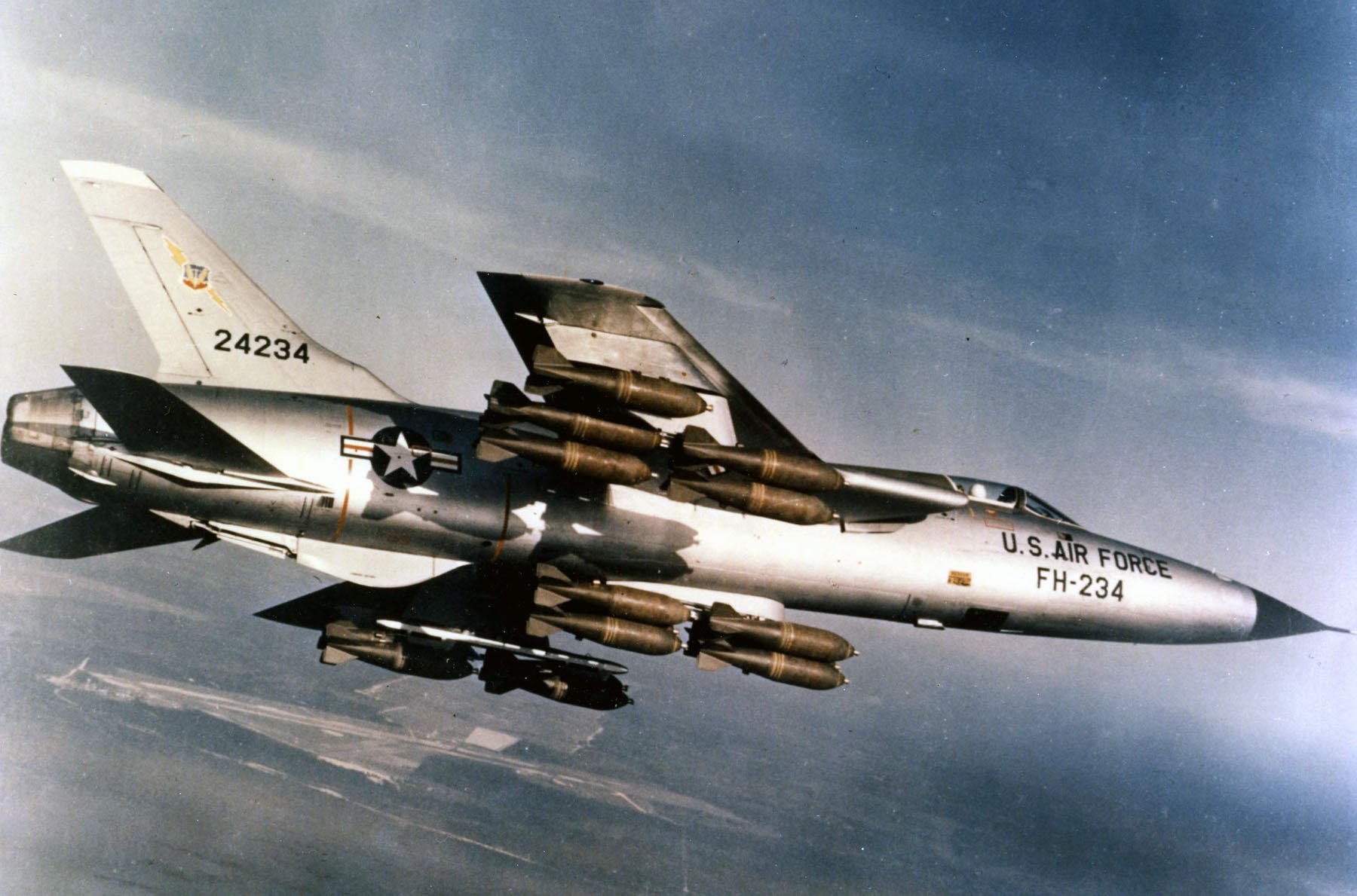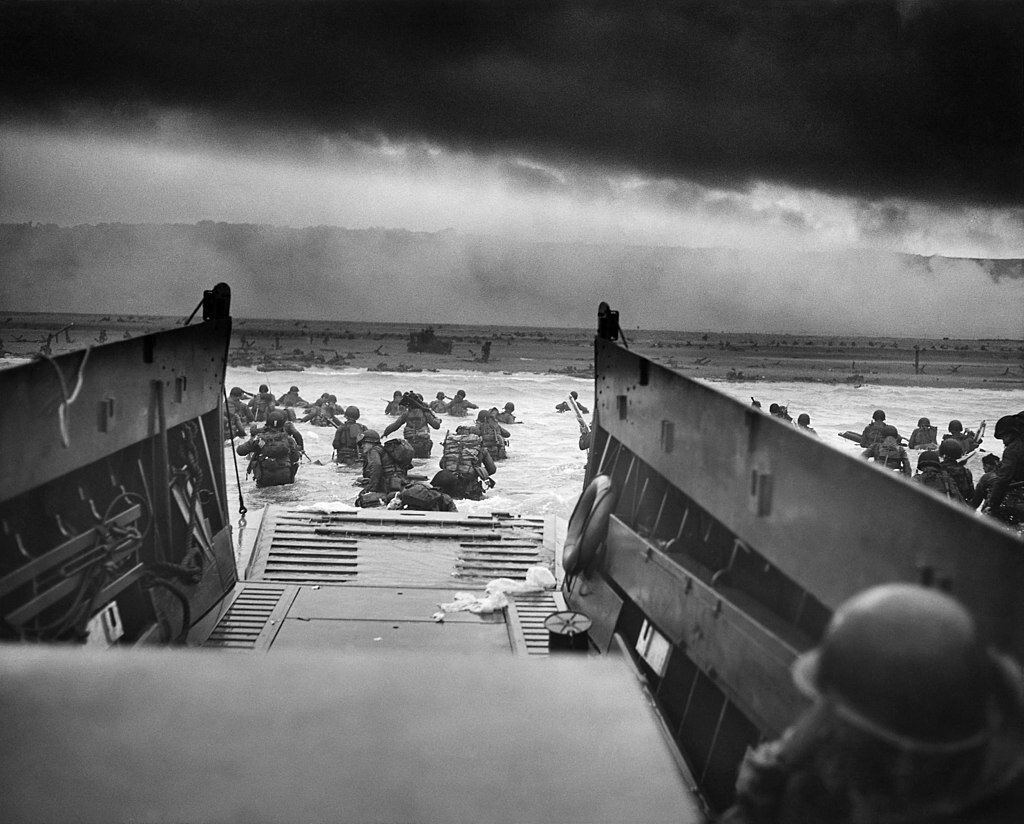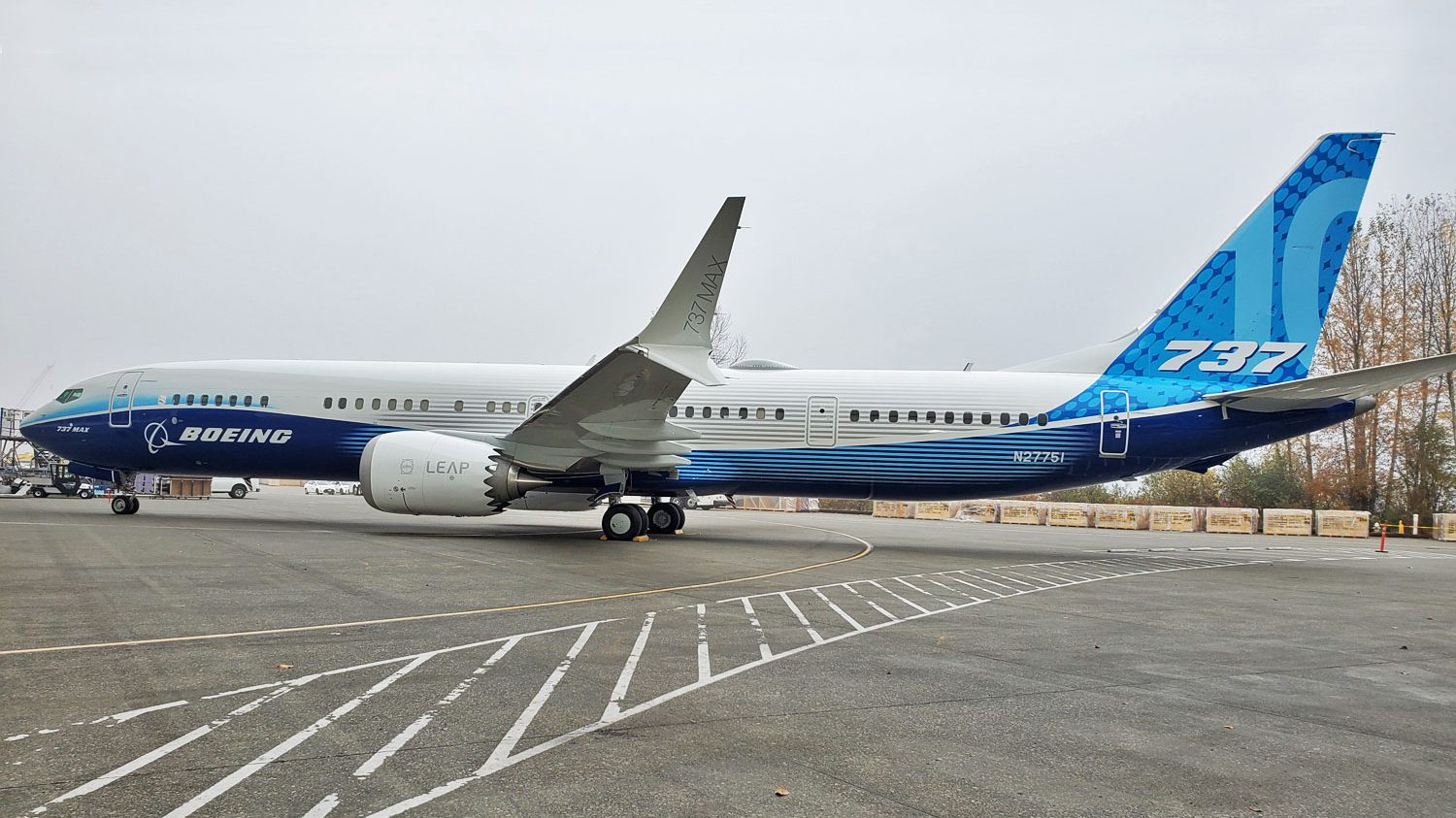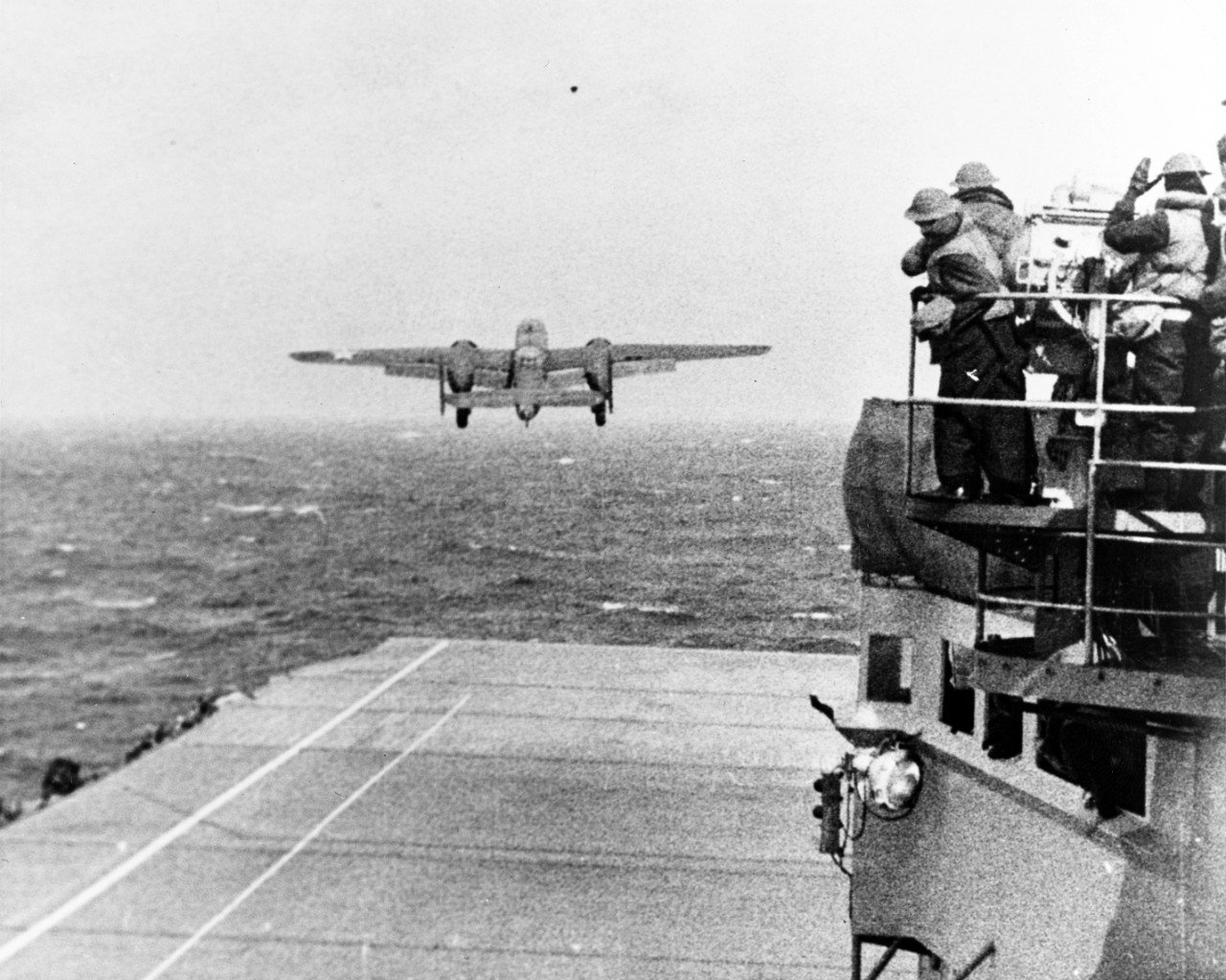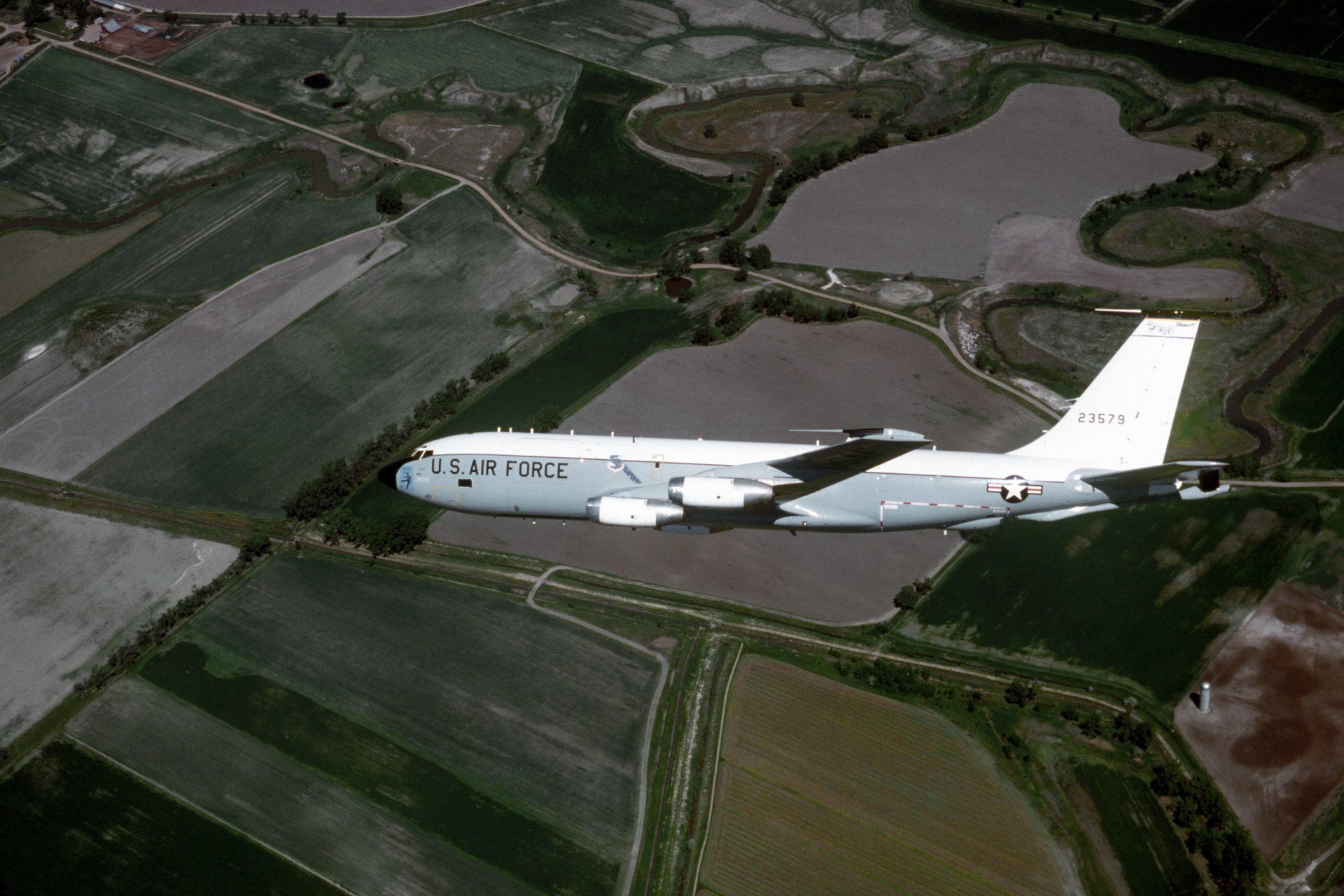Aircraft of the U.S. Air Force in the Vietnam War
November 8th, 2022
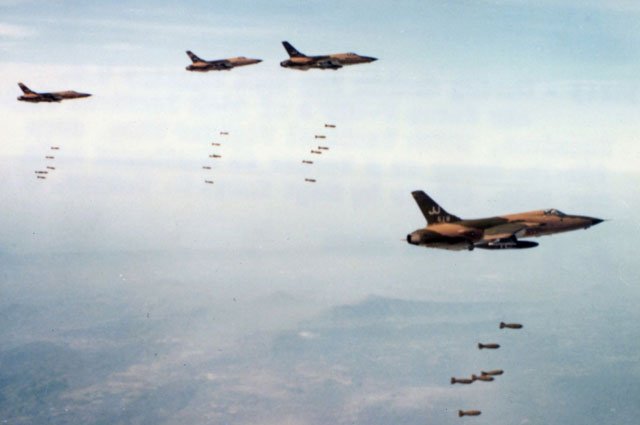
The Vietnam War started in 1955 and ended in 1975. The U.S. involvement of this war was between 1965 and 1972, and again in 1975. The U.S. Air Force operated quite a few different aircraft in the Vietnam War theater. This post is about the main ones including fighters, bombers, tankers, cargo, attack, and rescue planes. Here is a list of the main U.S. Air Force aircraft flown in the Vietnam War:
- North American F-100F Super Sabre
- McDonnell F-101 Voodoo
- Convair F-102 Delta Dagger
- Lockheed F-104 Starfighter
- Republic F-105 Thunderchief "Thud"
- McDonnell Douglas F-4 Phantom
- Martin B-57 Canberra
- Boeing B-52 Stratofortress
- DeHavilland C-7 Caribou
- Fairchild C-123 Provider
- Lockheed C-130 Hurcules
- Douglas AC-47 Skytrain
- Lockheed AC-130 Hercules "Spooky"
- North American Rockwell OV-10 Bronco
- Boeing KC-135 Stratotanker
- Sikorsky HH-3 Jolly Green Giant
- Douglas A-1 Skyraider
1. North American F-100F Super Sabre/Wild Weasel:
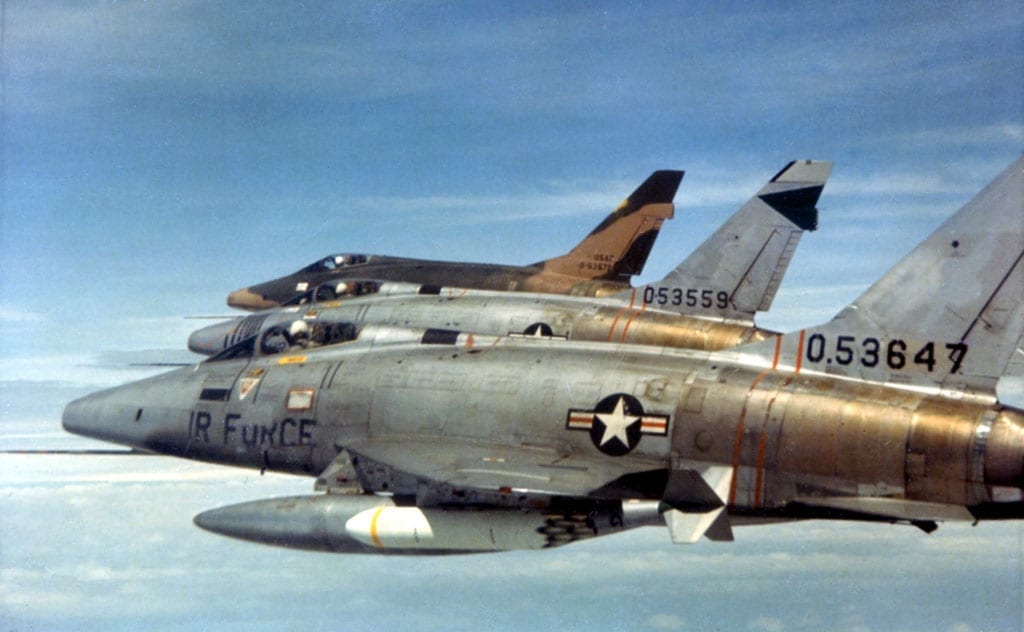
The North American F-100F Super Sabre/Wild Weasel was only used by the Wild Weasels in Vietnam. Before Vietnam, it was also used by the Thunderbirds. This aircraft required the probe and drogue method for aerial refueling, which works as follows. The tanker lets a refueling hose out with a basket on the end, and a probe on the aircraft needing refueling comes out and connects to that hose. The F-100 proved to be very successful with the Wild Weasels in Vietnam, though it was retired from the Wild Weasels by 1970.
2. McDonnell F-101 Voodoo:
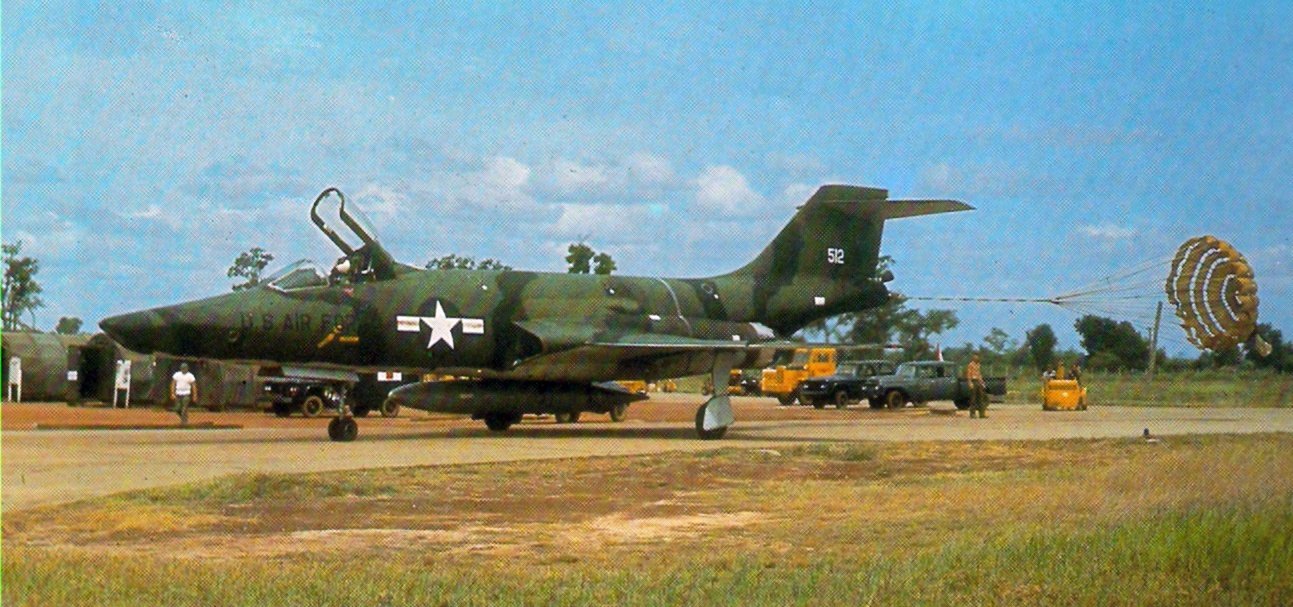
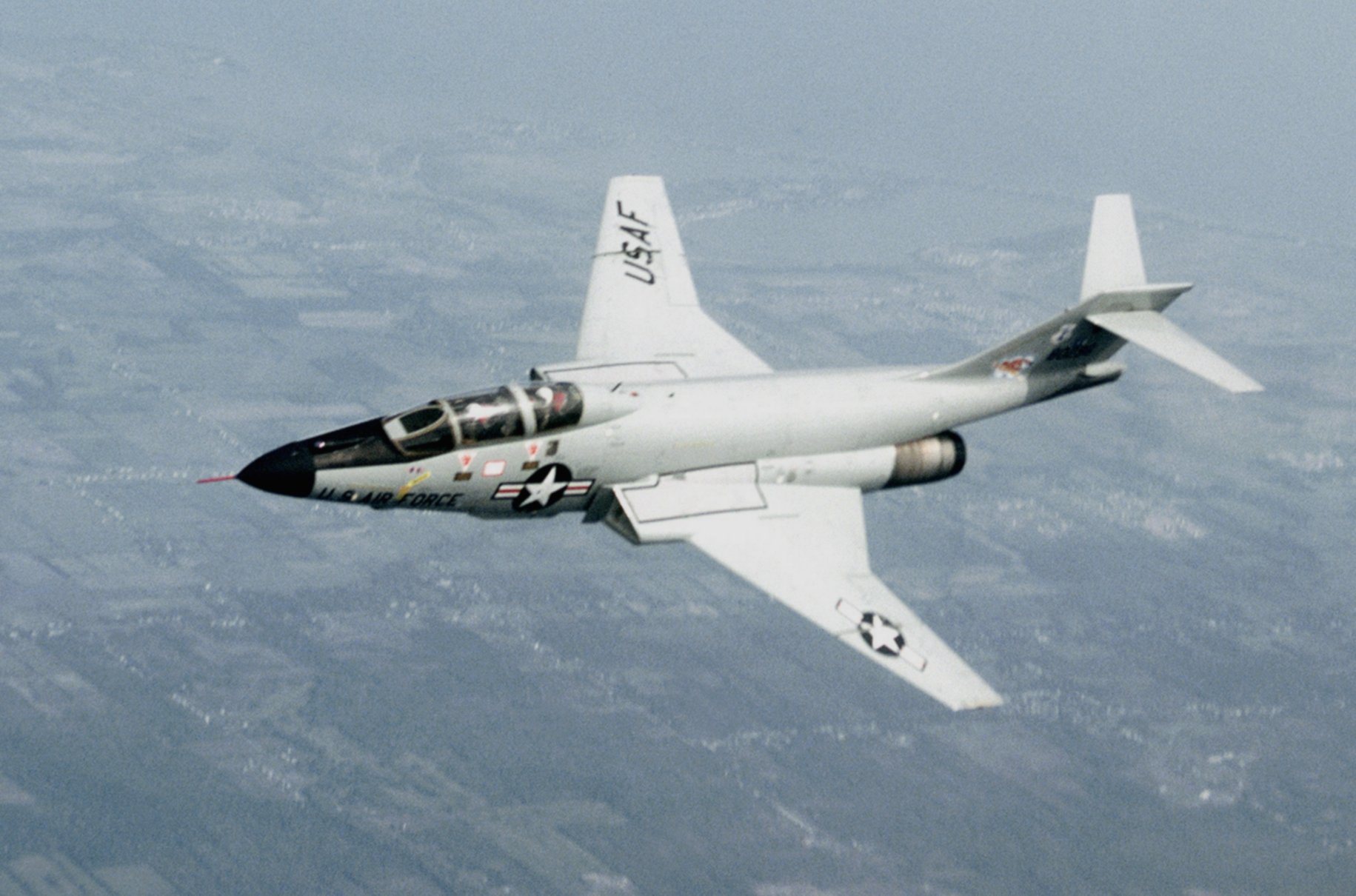
The McDonnell F-101 Voodoo was used during the Cuban Missile Crisis, and had the primary mission of photo reconnaissance and being an interceptor aircraft. It first started as the XF-88 Voodoo, which failed, but was upgraded to a new design, the F-101 Voodoo. This version first flew in 1954. The last type was retired in the mid-1970s to be replaced by the F-106 and F-4.
3. Convair F-102 Delta Dagger:
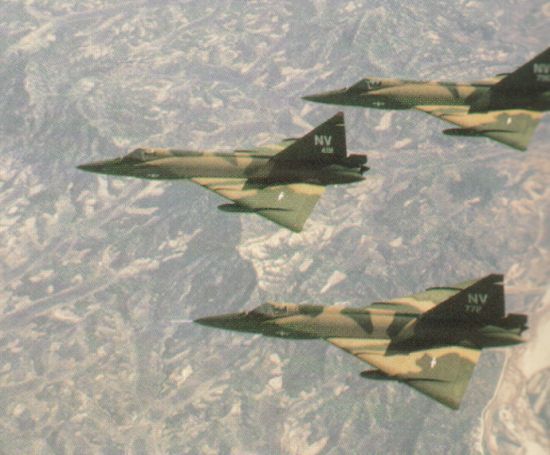
The Convair F-102 Delta Dagger first came out in 1953 as the world's first supersonic delta-wing aircraft. Convair (Consolidated Vultee Aircraft) failed to make the F-102 go supersonic even though they made the world's first delta-wing aircraft. After an emergency redesign program, it finally went supersonic a year later. The F-106 was an upgrade which came out five years later. The F-106 never served in Vietnam.
4. Lockheed F-104 Starfighter:
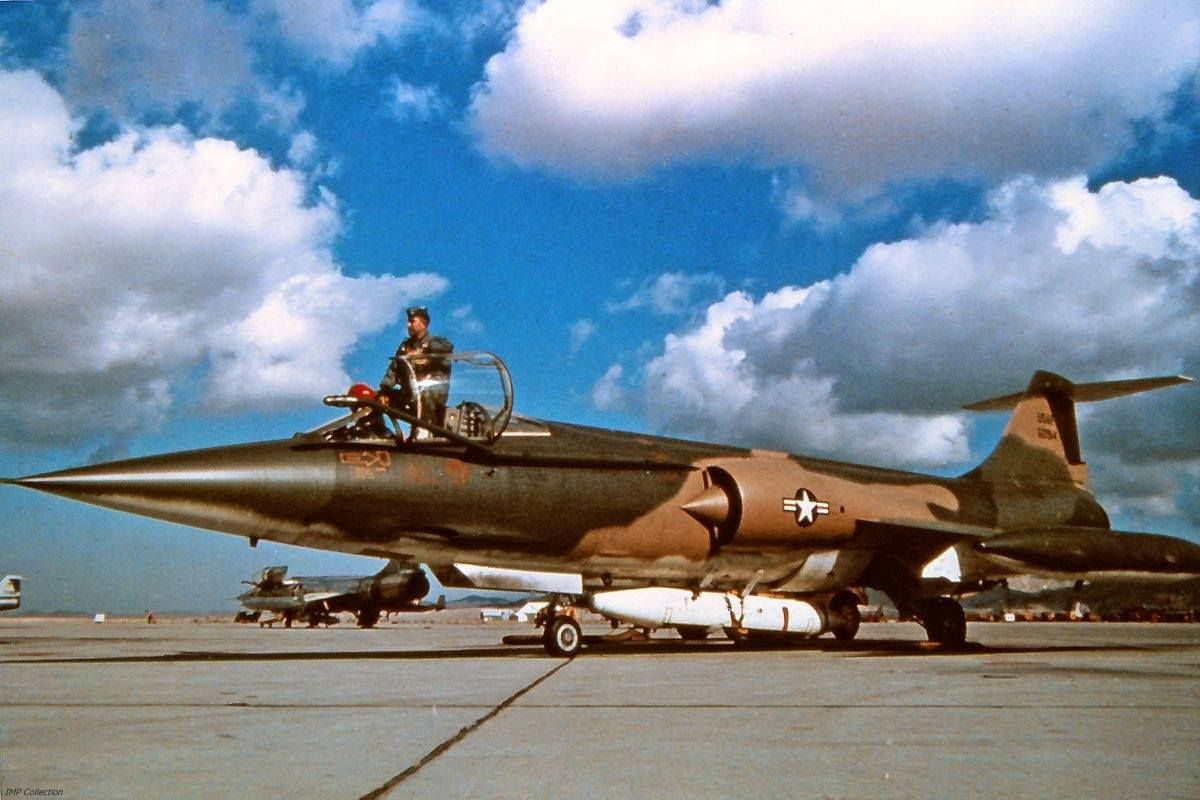
The West German government ordered an aircraft easily capable of beating the MiG 15 in a dogfight, and the Lockheed F-104 Starfighter was made to meet this requirement. The F-104 had many similarities to the Douglas X-3 Stiletto. The F-104's main problem was that it was very easy to lose control in flight. The F-104 served as a high-altitude fighter-bomber in Vietnam.
5. Republic F-105 Thunderchief "Thud":
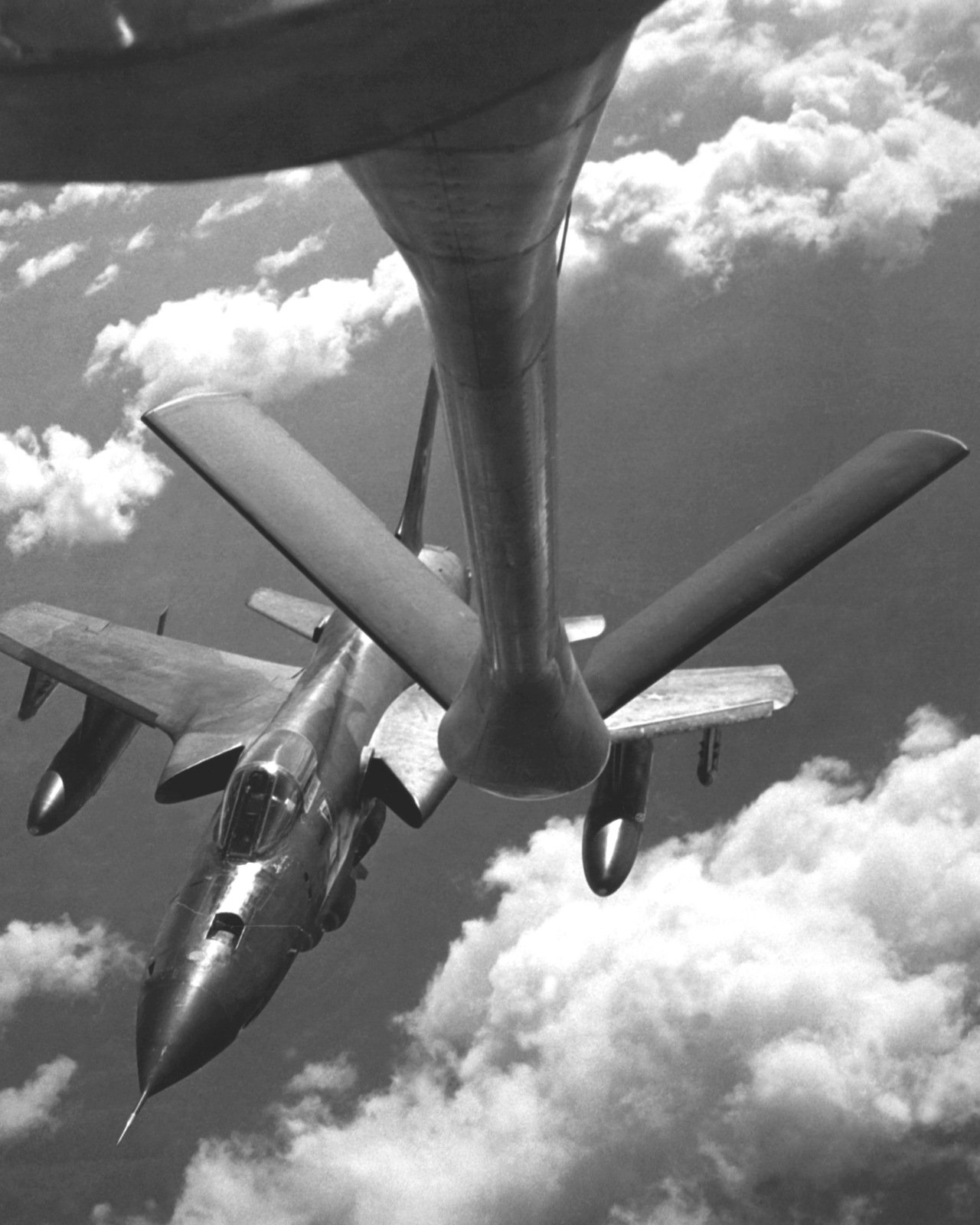
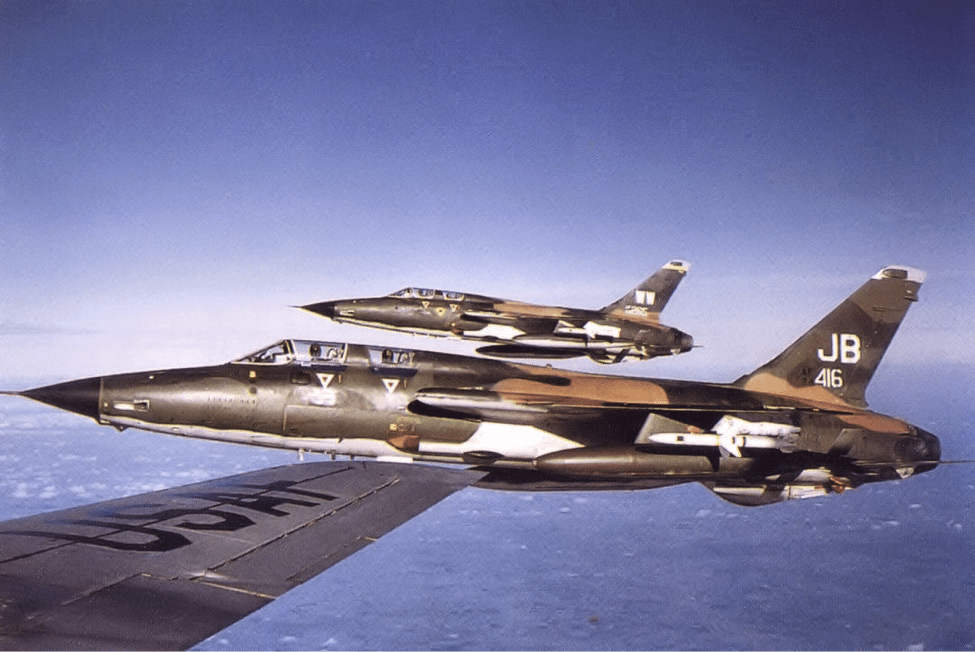
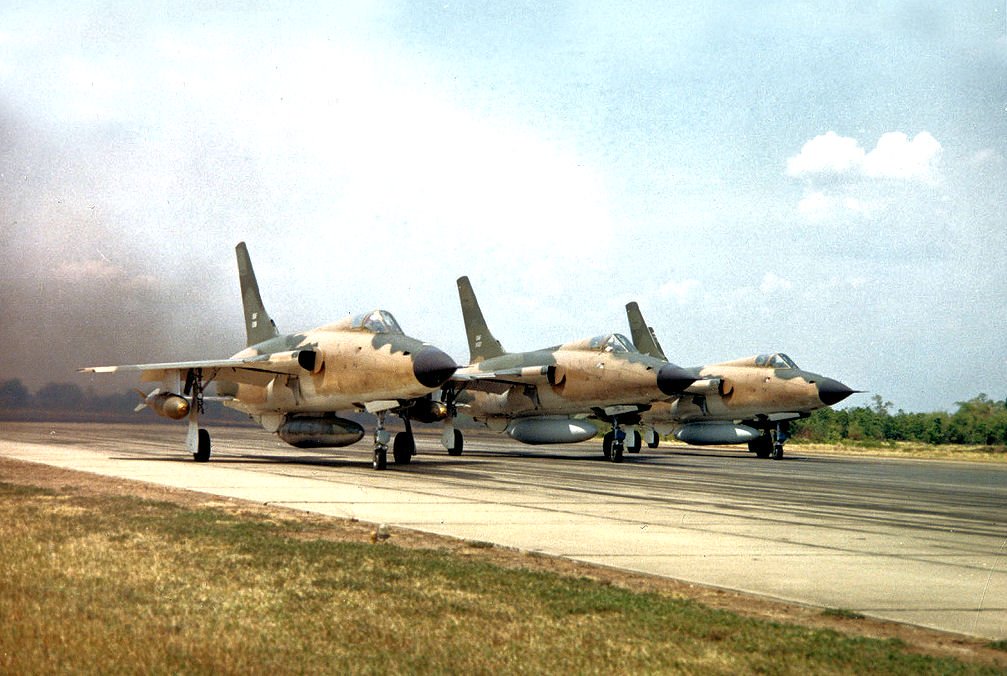
The Republic F-105 Thunderchief was based in Thailand and DaNang, South Vietnam during the Vietnam War. The Thud received its nickname during Operation Rolling Thunder, the U.S. bombing campaign on North Vietnam, after suffering heavy losses and dropping thousands of bombs on North Vietnam. The Thud also was the second aircraft used by the Wild Weasels and also the fourth aircraft used by the Thunderbirds.
6. McDonnell Douglas F-4 Phantom:
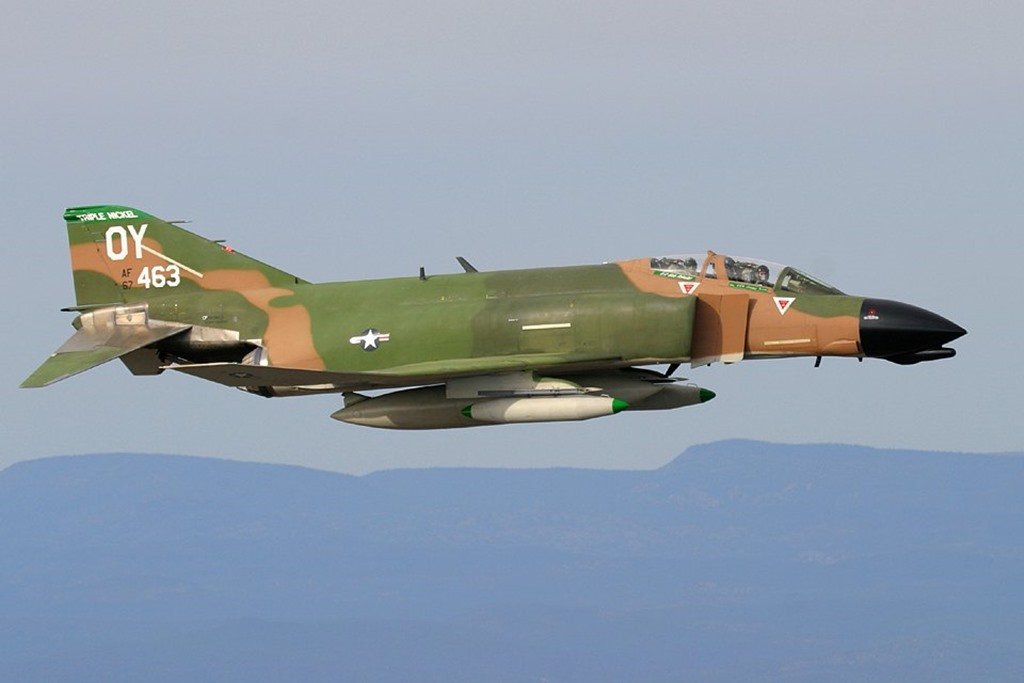
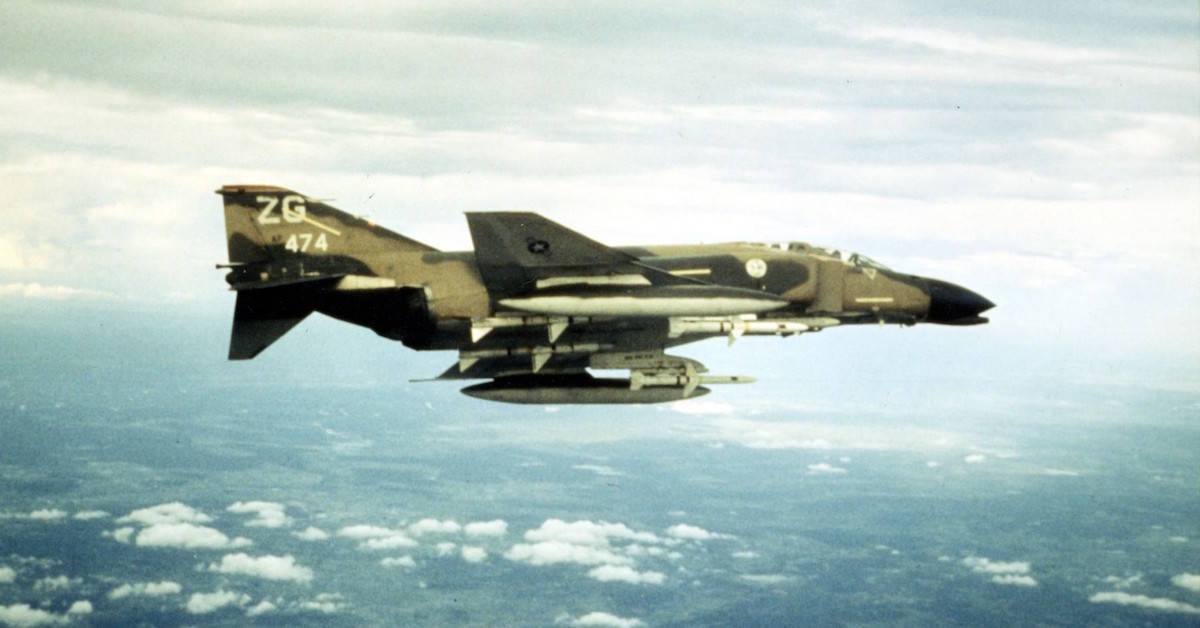
The McDonnell Douglas F-4 Phantom was one of the biggest mistakes made by both the U.S. Navy and Air Force. This is because it was ordered without a gun, only missiles, which against Soviet trained pilots was useless. It was also the only aircraft used by all three groups: the Wild Weasels, Thunderbirds, and the Blue Angels. The F-4 after getting a gun proved to be one of the best fighter aircraft in the world at the time, and served from 1960 until 1998 before being retired.
7. Martin B-57 Canberra:
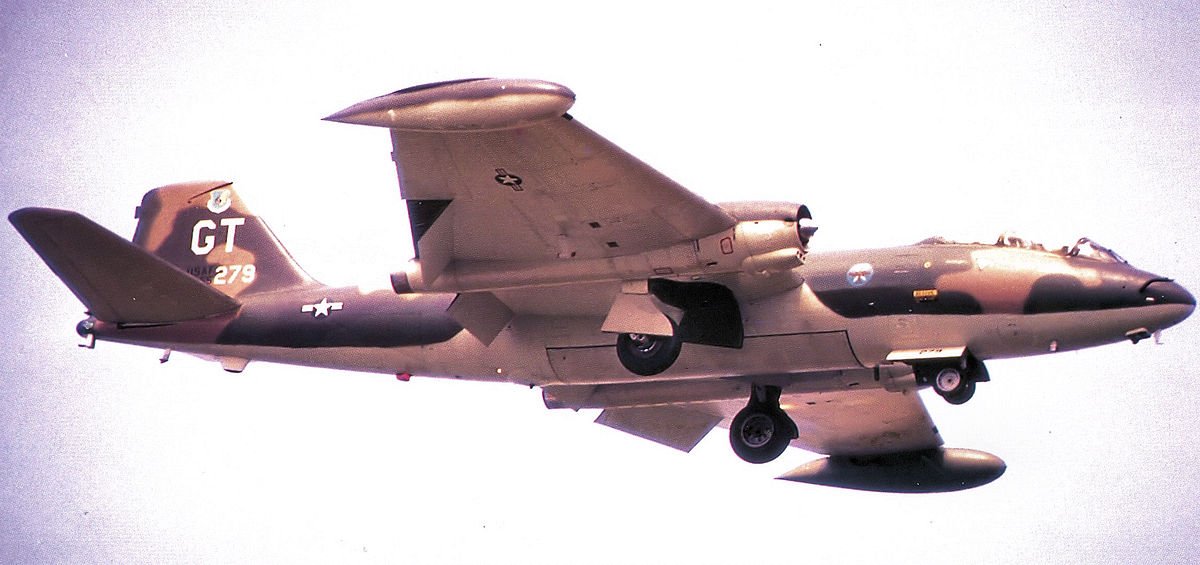
The Martin B-57 Canberra was based off of the English Electric Canberra, a first-generation jet bomber from the late-1940s. The Martin B-57 first flew in 1953 and served in Vietnam for most of the war. The Canberra also barely missed serving in the Korean War, as its first flight was just 7 days before that war ended.
8. Boeing B-52 Stratofortress:
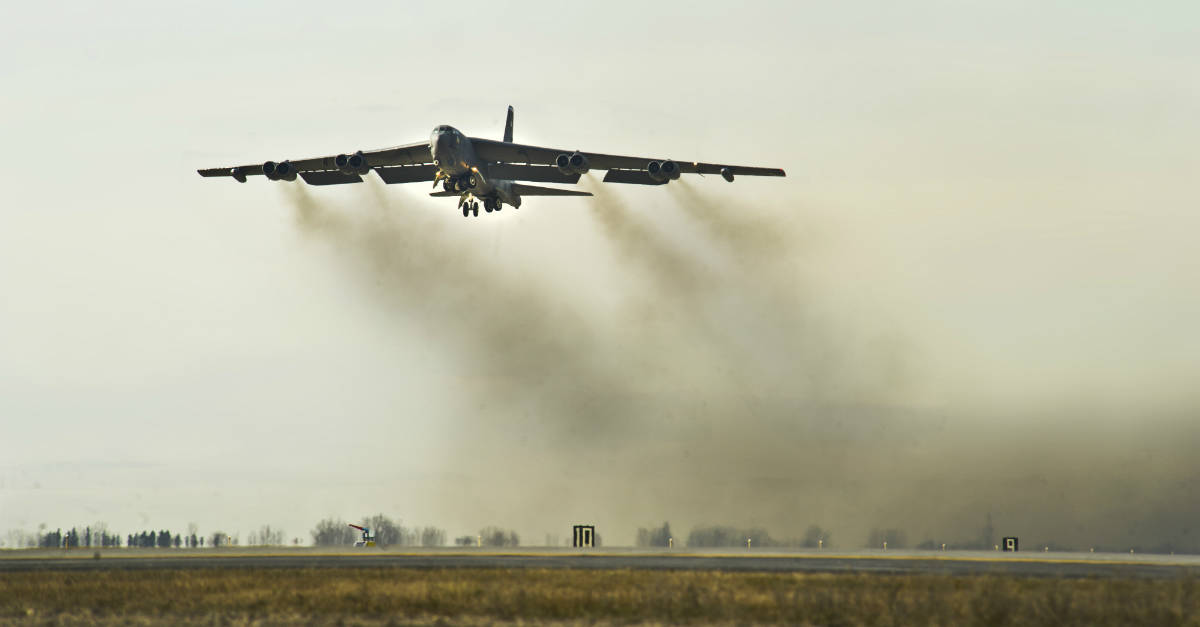
B-52 Stratofortress taking off
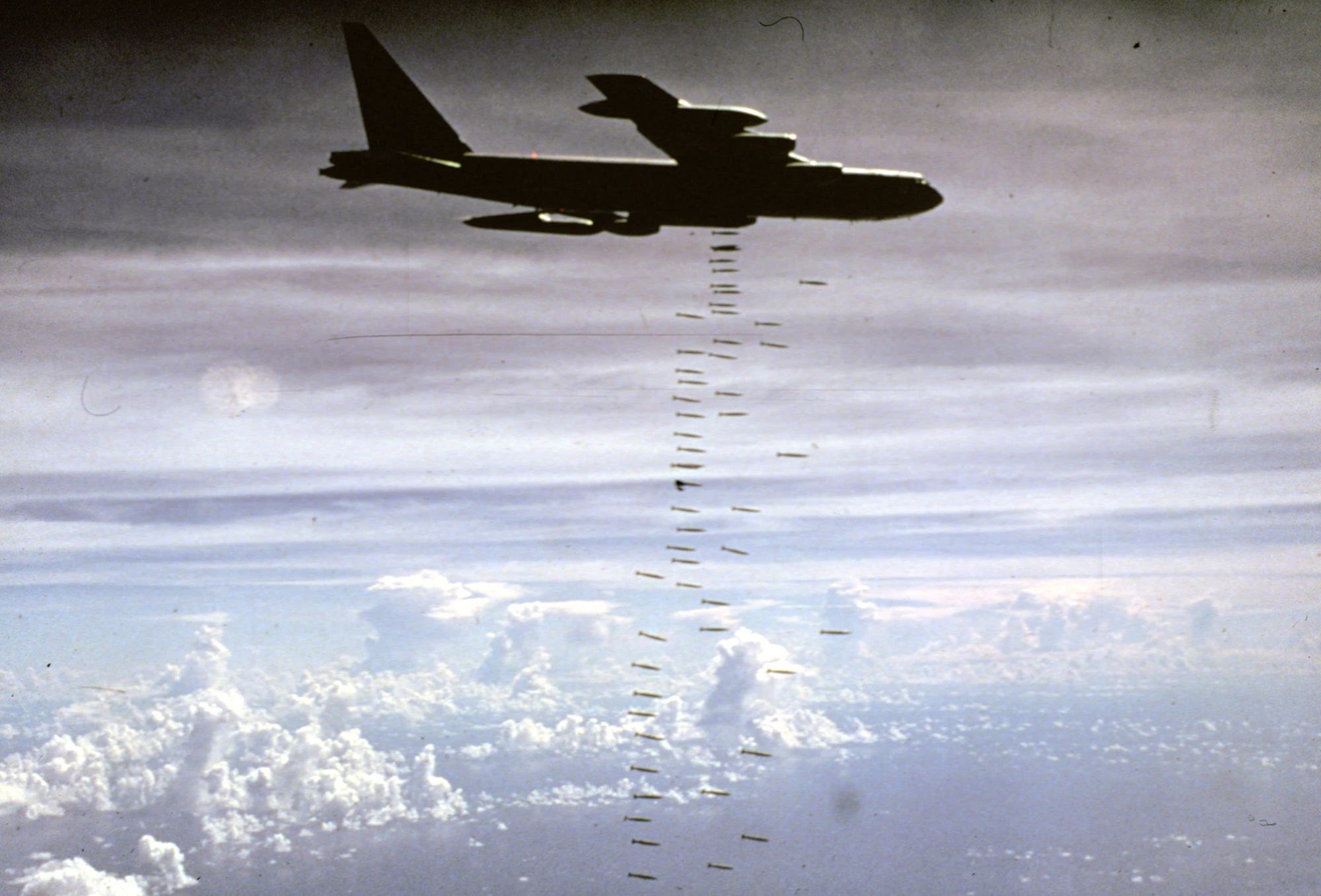
 B-52 Stratofortress bombing North Vietnam
B-52 Stratofortress bombing North Vietnam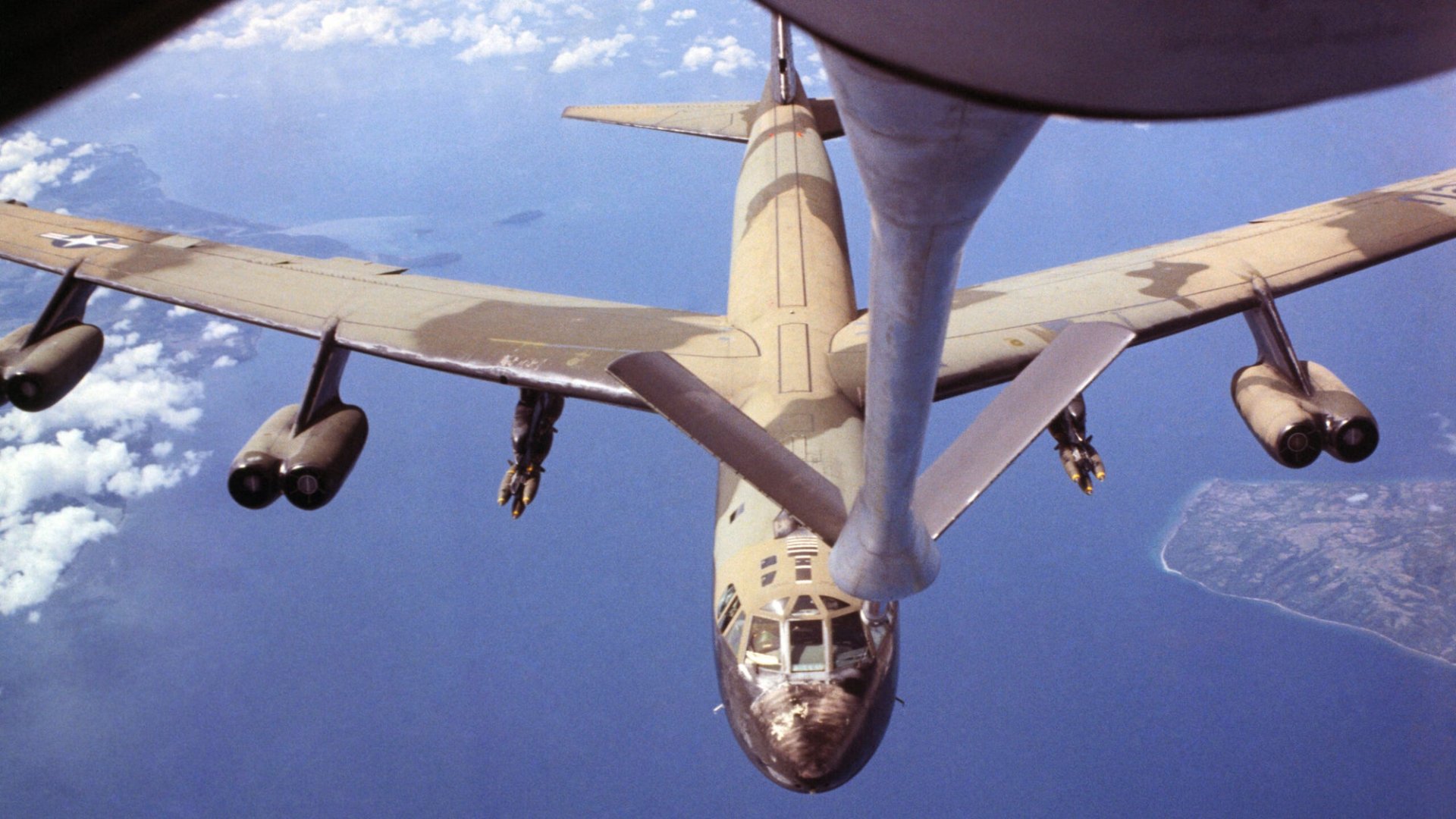
The Boeing B-52 Stratofortress, still in service, holds the record of being in service for the longest period of time - since 1952, over 70 years ago. The B-52 was ordered during World War II and had multiple different designs before being ordered in 1948, and in 1952 the XB-52 first flew. In 1954 the YB-52 first flew and the YB-52 was put in production. The B-52 is expected to remain in service until 2055. In Vietnam, the B-52 bombing campaign was dubbed "Arc Light". For decades the B-52 has served as the mothership for several different types of aircraft including the X-15, X-38, D-21s, X-43, and several others. The B-52 refueling system requires the boom system, which is when a boom extends from the tanker and the boom connects to the B-52.
9. DeHavilland C-7 Caribou:
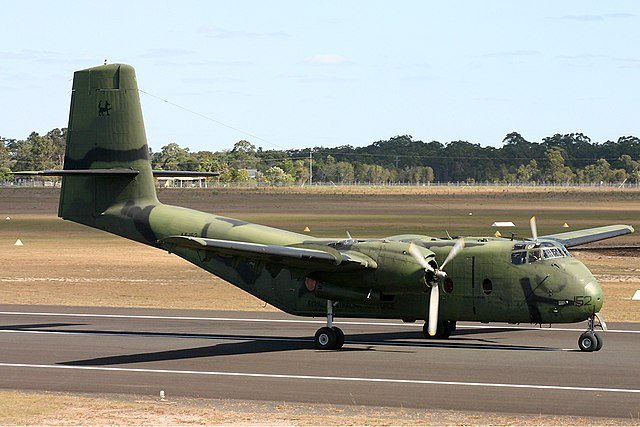
The DeHavilland C-7 Caribou was a modified DeHavilland Canada DHC-4 Caribou aircraft originally ordered for the U.S. Army as the CV-2. But in 1967, the U.S. Air Force took over control of the U.S. Army fixed wing support aircraft and renamed it the C-7. The C-7 proved to be very reliable and well built. In fact, one crashed into a mountain in January 1967 and for the most part it survived.
10. Fairchild C-123 Provider:

The Fairchild C-123 Provider was the primary aircraft used in Vietnam in the early stages of the Vietnam War. The C-123 mechanics added two jet engines to the Provider to give it more power earlier resulting in shorter runways required. The C-123 was based off of a World War II heavy glider that was never put into production, and in 1948, it first flew with the design basically being a glider with two engines.
11. Lockheed C-130 Hercules:
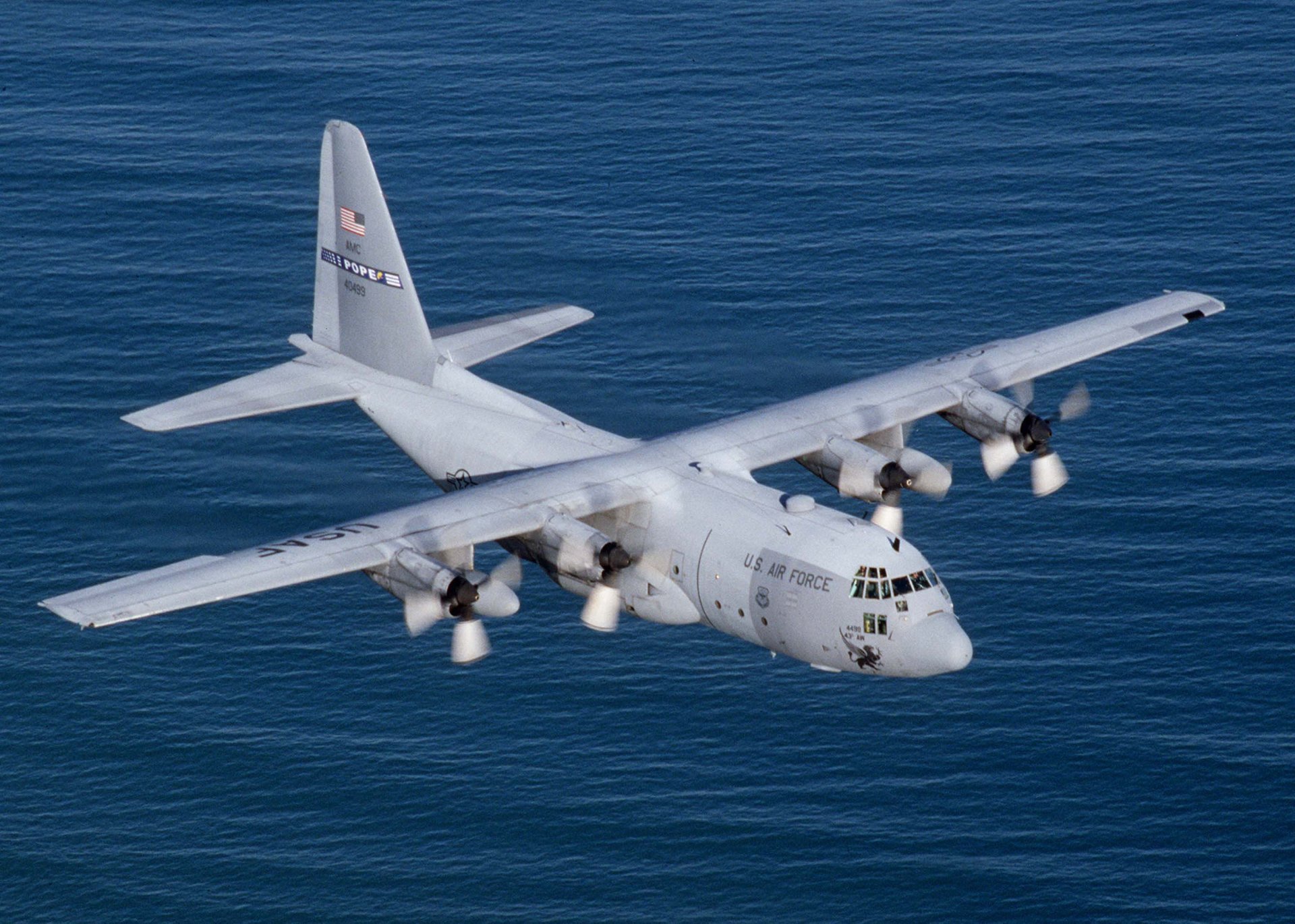
The Lockheed C-130 Hercules is one of the main cargo aircraft in the U.S. Air Force. There are over 70 different variants! It first flew in 1954, and the newer variants are still in service, although the U.S. Air Force is expected to start retiring the C-130 and C-130 variants in 2023. The C-130 is also used by the Blue Angels as their support aircraft. The C-130 is the primary aircraft used by paratroopers. In Vietnam, one C-130 pilot landed on an airfield being invaded by Viet Cong and he rescued every American on the base just as the Viet Cong were coming on the airfield.
12. Douglas AC-47 Spooky:
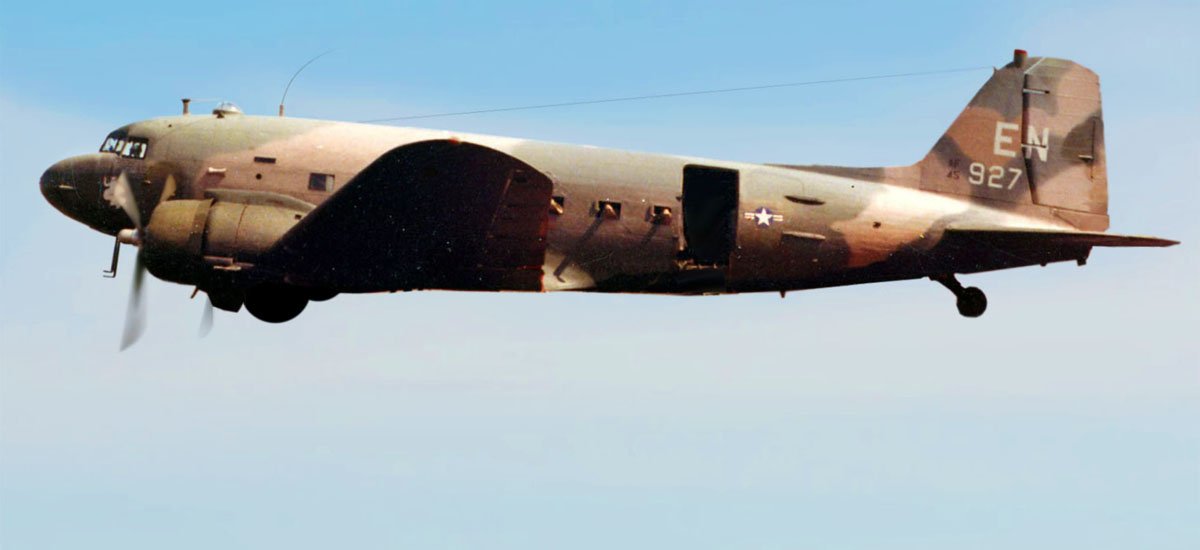
The Douglas AC-47 Spooky was a World War II C-47 Skytrain modified to be a gunship and supposedly received the nickname "Puff the Magic Dragon" from the Viet Cong, because they had never seen an attack from the air. The AC-47 was also used for dropping paratroopers in Vietnam. The last AC-47 was retired in 1975.
13. Lockheed AC-130 Hercules:
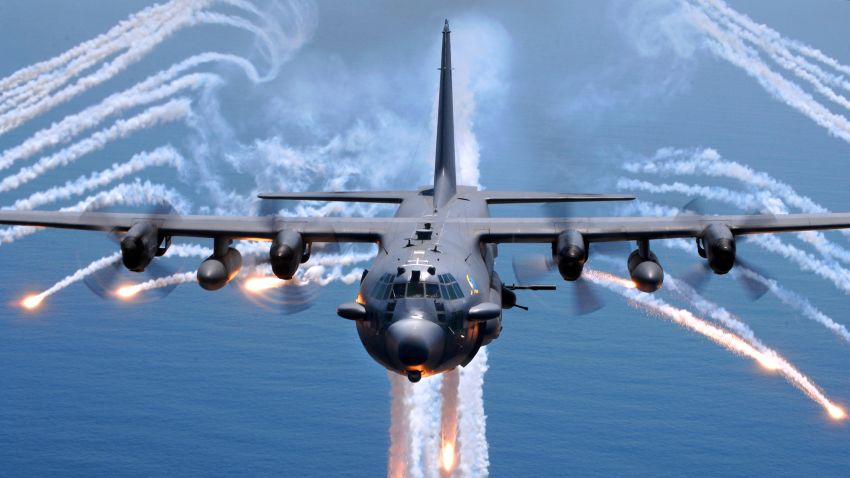
The Lockheed AC-130 Hercules is based off of the Lockheed C-130 Hercules. it has served since 1960 as the primary gunship in the U.S. Air Force. The AC-130 received the nicknames "Spooky" and "Puff the Magic Dragon" or just simply "Puff" for the same reasons as the AC-47. The AC-130 when firing its guns looked like a firehose spraying out a hose of fire.
14. North American Rockwell OV-10 Bronco:
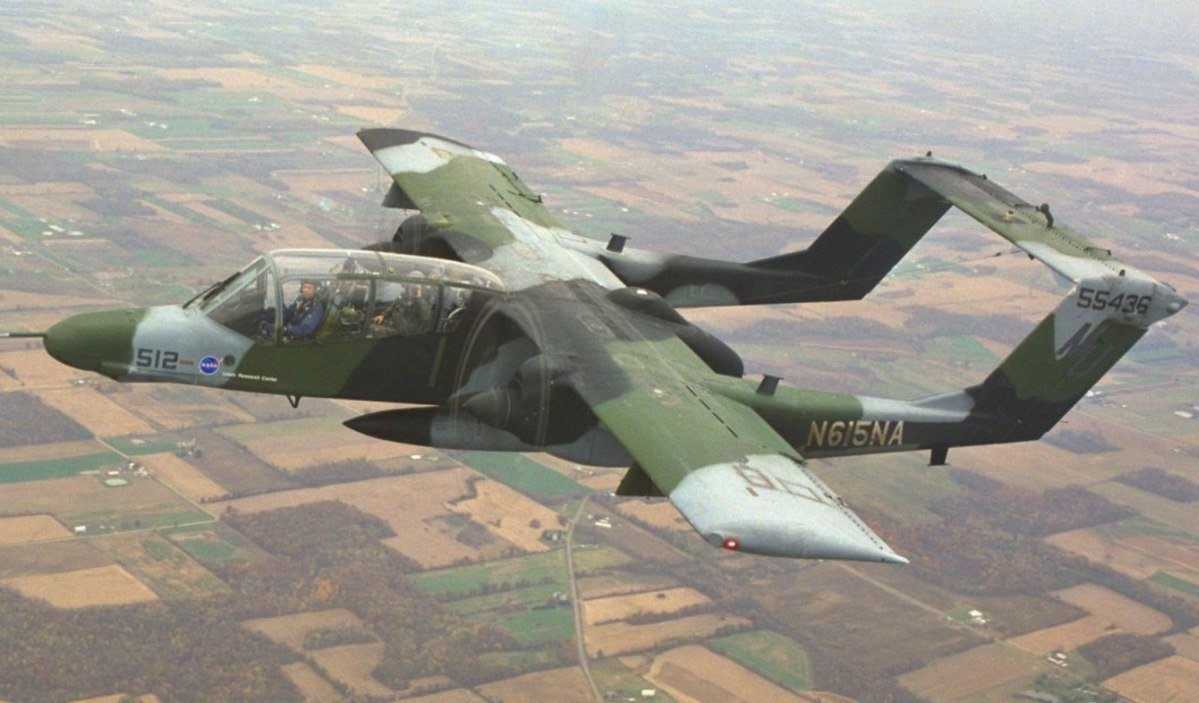
15. Boeing KC-135 Stratotanker:
The North American Rockwell OV-10 Bronco was used by the U.S. Air Force as a FAC (Forward Air Controller), as Armed Reconnaissance in missions over North Vietnam, and limited ground attack roles. The OV-10 was also used in Operation Desert Storm. The OV-10 first flew in 1967 and was retired in 1995.
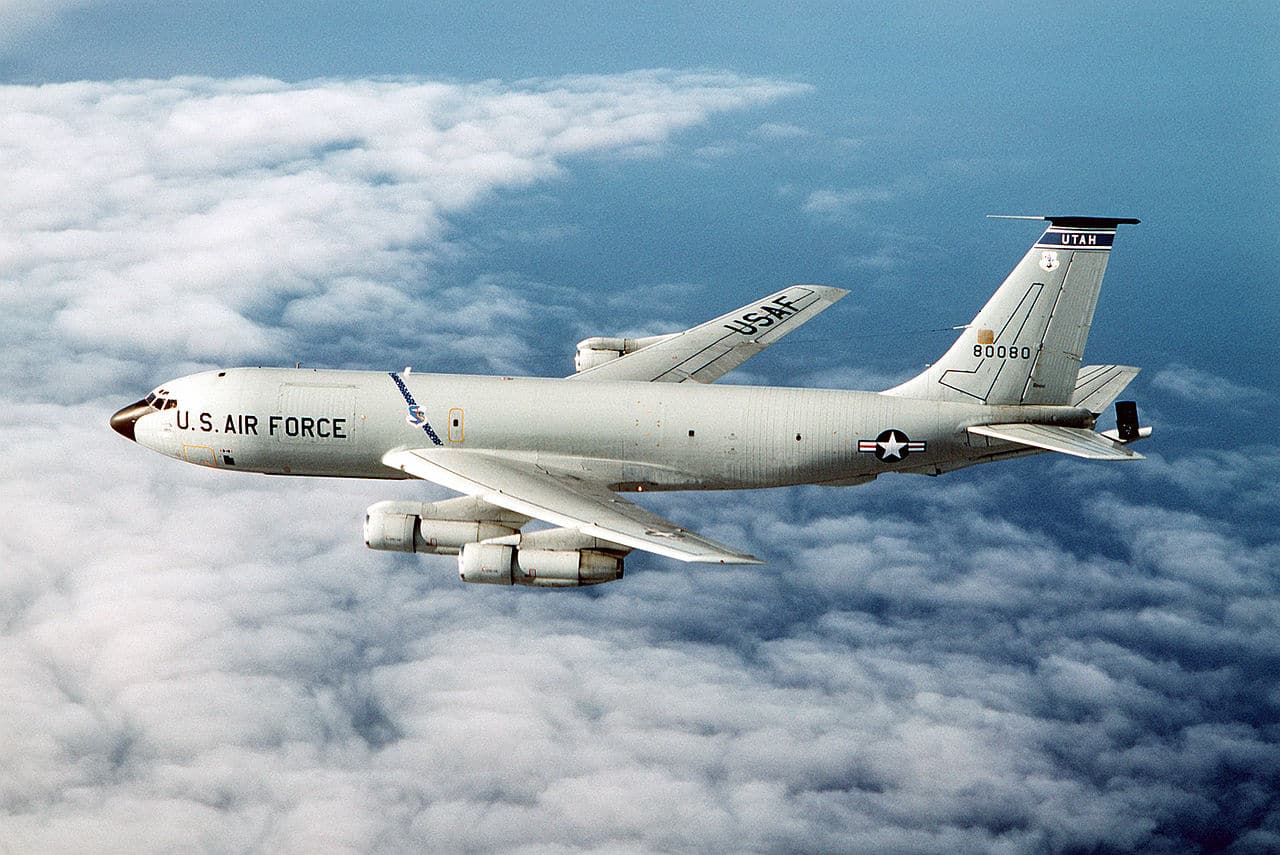
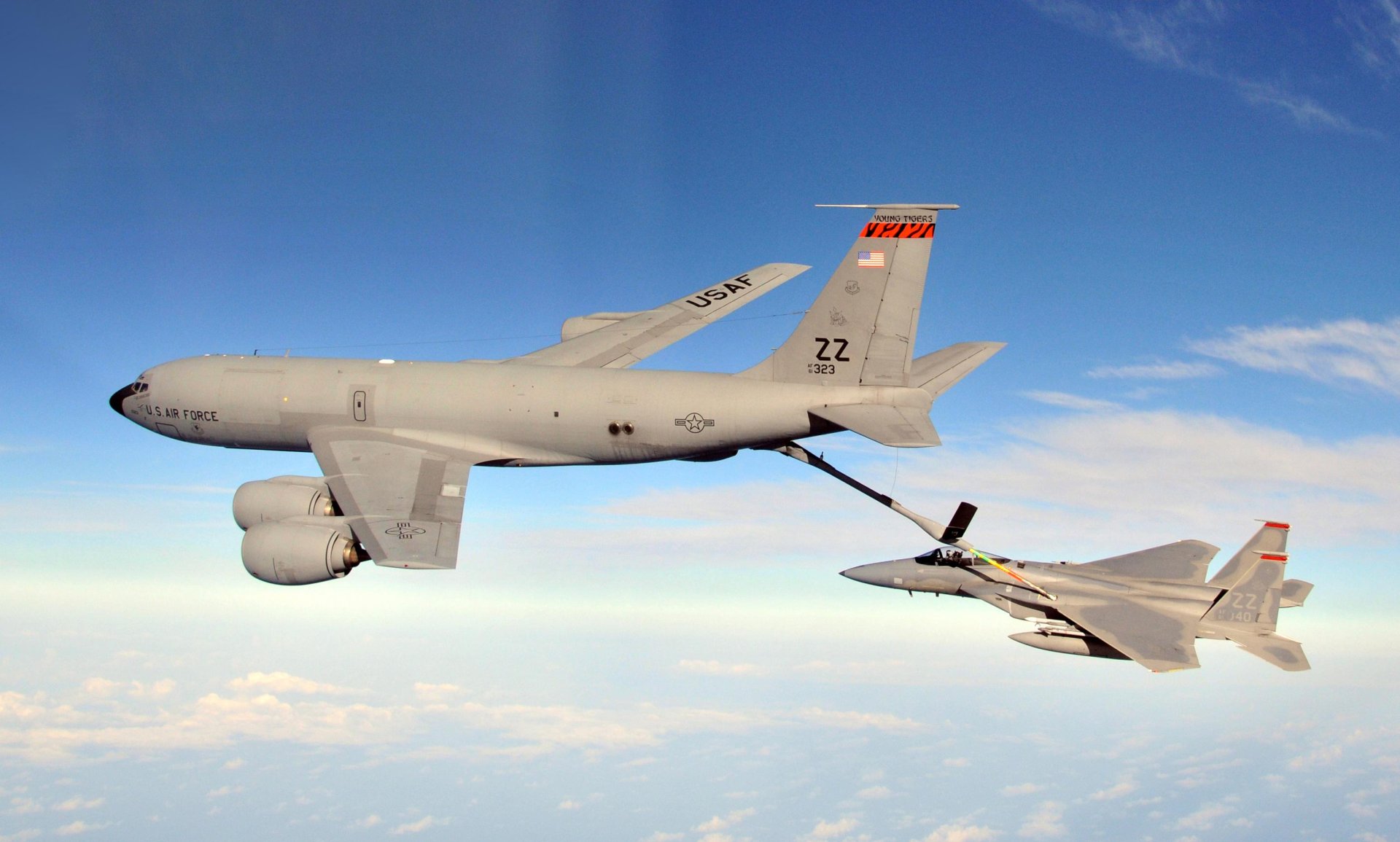
The Boeing KC-135 Stratotanker is the oldest tanker in service within the U.S. Air Force. This tanker is capable of refueling aircraft with ether the probe-and-drogue or the boom systems. The KC-135 is based off of the C-135, which is based off of the Boeing 707 prototype the Boeing 367-80. The KC-135 first flew on August 31st, 1956 and is currently being retired as of 2022 to be replaced by the Boeing KC-46 Pegasus.
16. Sikorsky HH-3 Jolly Green Giant:
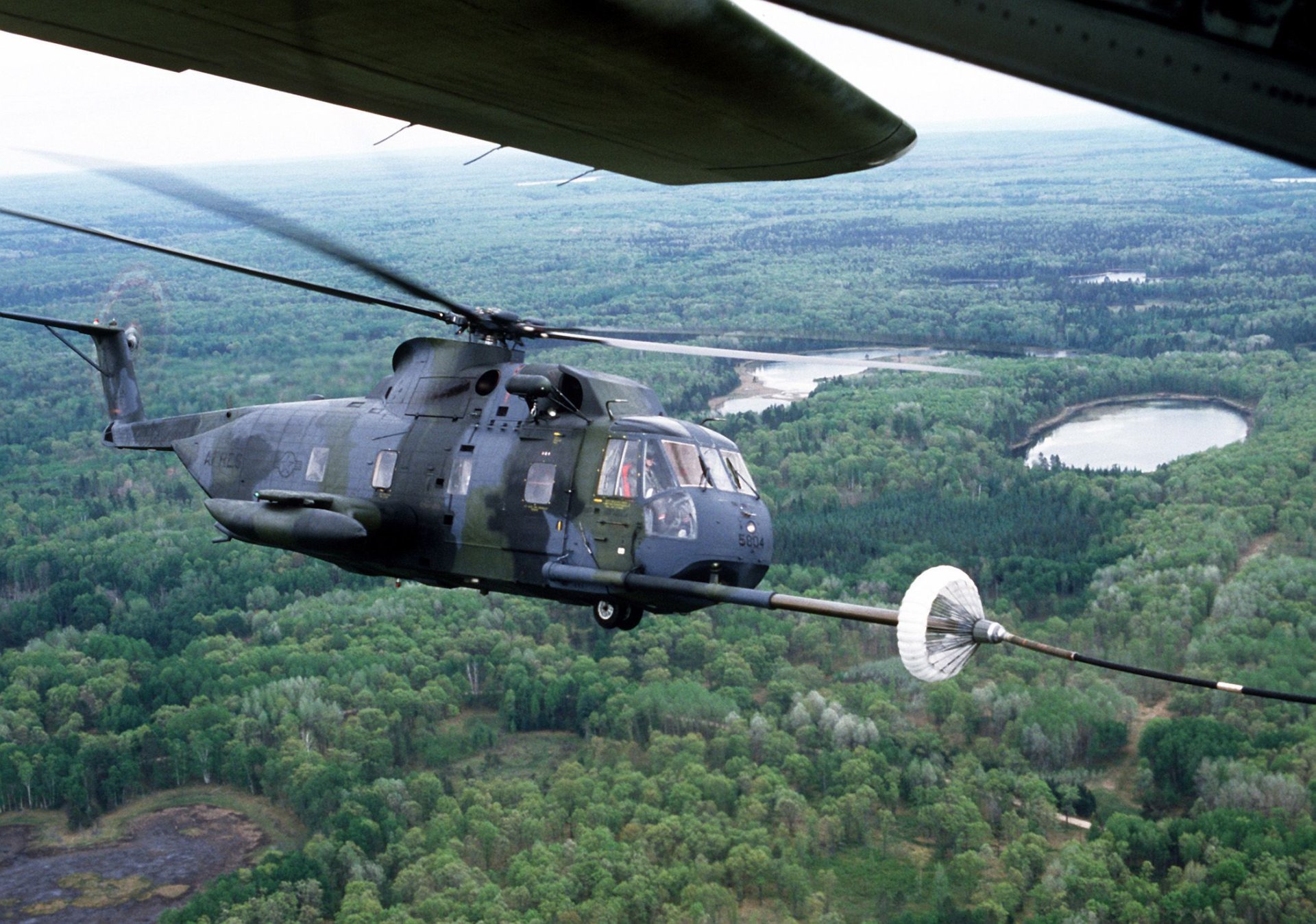
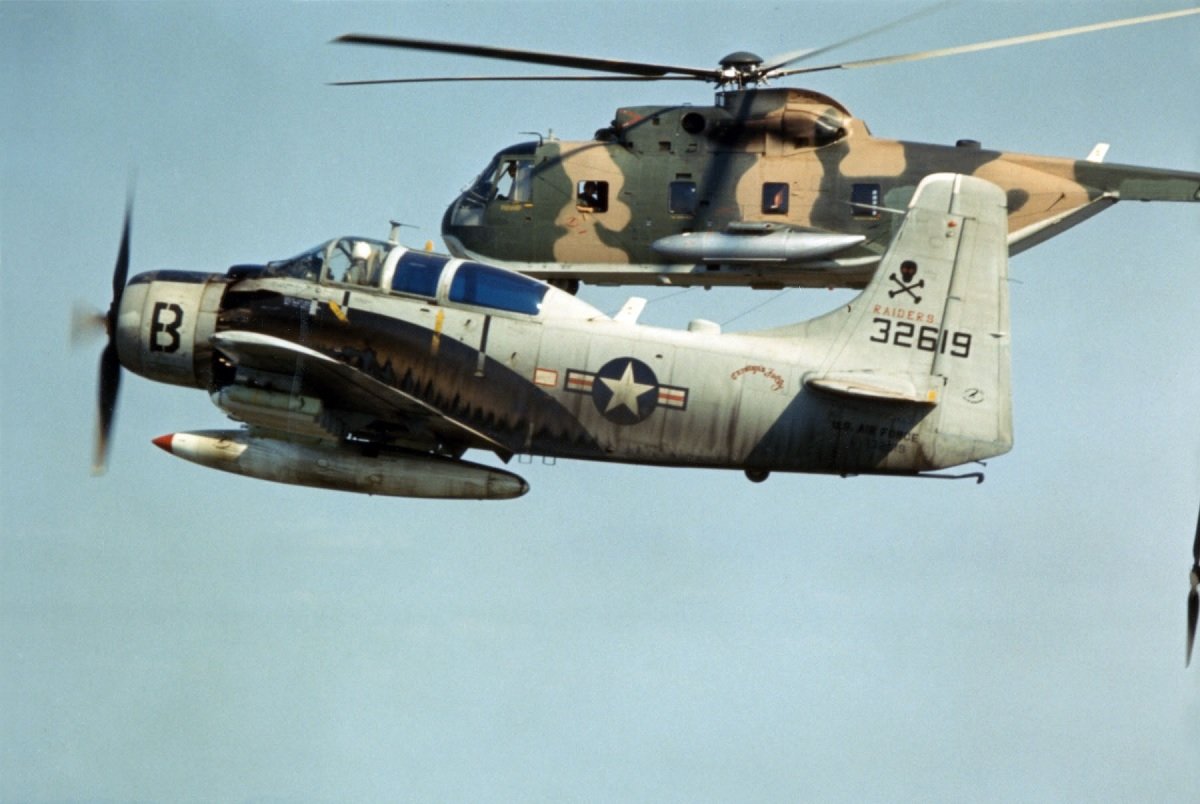
The Sikorsky HH-3 Jolly Green Giant was one of the largest helicopters in the Vietnam War (hence the name). It was the primary U.S. Air Force rescue helicopter in the Vietnam War. Its escort was the Douglas A-1 Skyraider due to the A-1's speed being around the same as HH-3's and having a long range.
17. Douglas A-1 Skyraider:


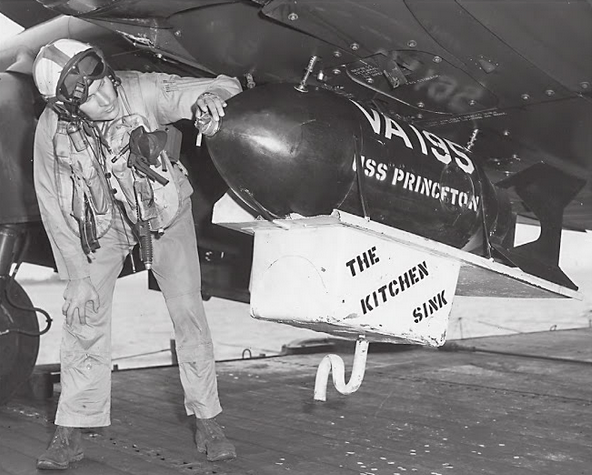
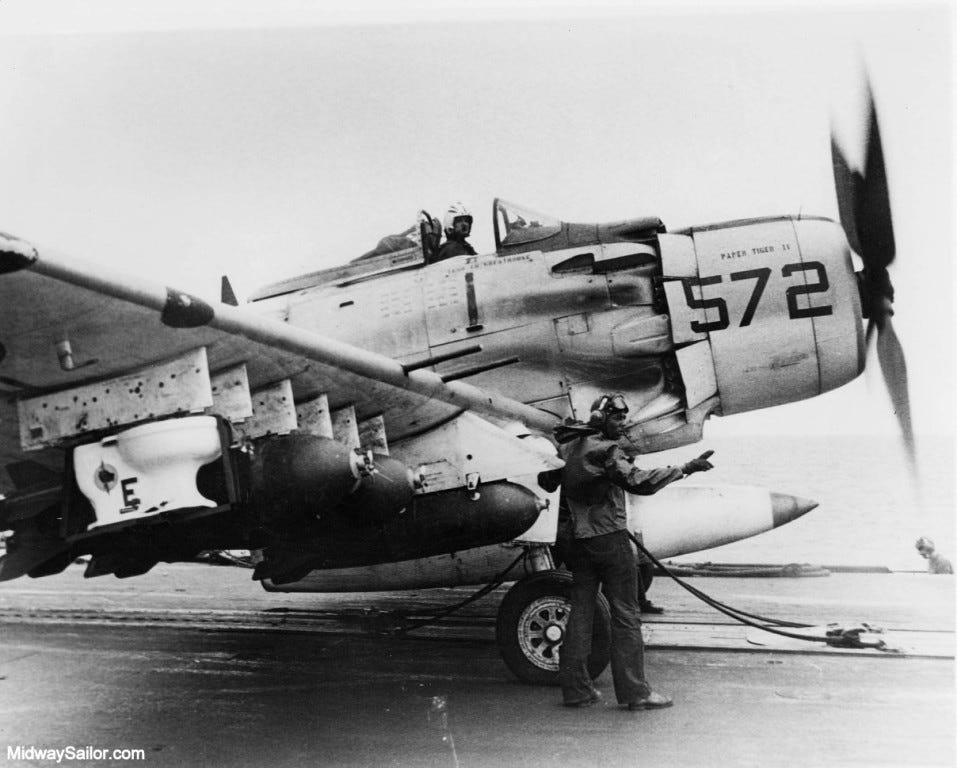
The Douglas A-1 Skyraider was a U.S. Navy carrier aircraft originally ordered to serve in World War II, but missed the war by several months. In the Korean War, the captain of the U.S.S. Princeton said that the A-1 could carry everything but a kitchen sink. Shortly after, a smart A-1 squadron then dropped an actual kitchen sink on the enemy near Pyongyang, North Korea, just to prove the captain wrong. Then in the early 1960s A-1 Skyraider pilots nicknamed the A-1 "Spad" after the famed SPAD biplane of World War I. In October 1965, in the Vietnam War, another A-1 pilot carried a ceramic toilet to drop on the North Vietnamese positions to celebrate the six millionth bomb dropped on a communist country!

